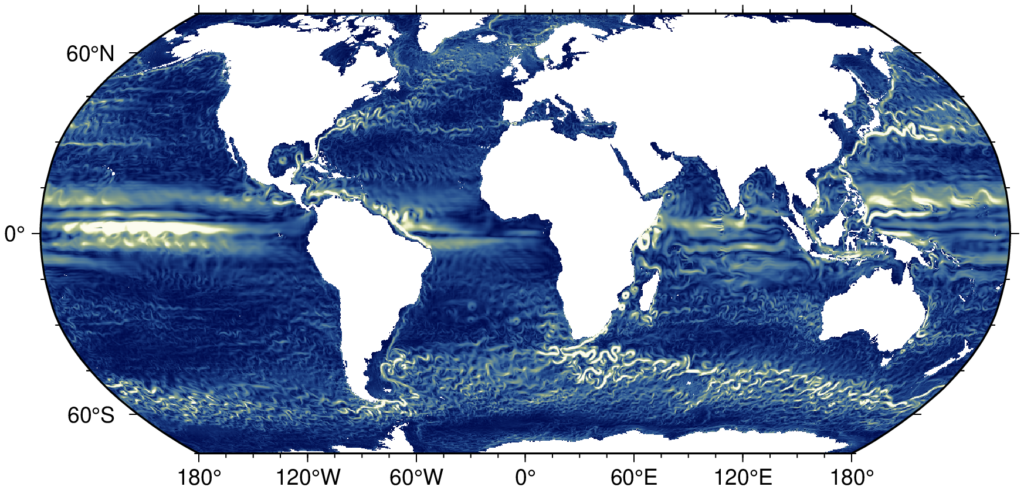The first-ever Oceananigans town hall at Ocean Sciences
Every other February, oceanographers from around the world congregate to share new scientific insights, and tales of adventure on the high seas at AGU’s Ocean Sciences Meeting. But this February was a little different than past even-yeared Februaries — not only because oceanographers gathered virtually, but also because in 2022 the Climate Modeling Alliance unveiled their experimental ocean model to the world: Oceananigans. Oceananigans is
- Fast: Oceananigans is GPU-accelerated and compiled, and leverages multiple dispatch to run “minimal code” for any user experiment.
- Friendly: Oceananigans uses an intuitive, flexible, and extensible user interface with a powerful system for scheduling calculus and arithmetic tasks with finite volume fields for output.
- Flexible: Oceananigans injects custom user-defined forcing functions and boundary condition functions into hot GPU kernels with no performance penalty, supports arbitrary numbers of passive and active tracers, and provides fully configurable parameterizations.
- Fun: Oceananigans is written in the Julia programming language – hip, new, fun.
In other words, scientists wielding Oceananigans can implement simulations ranging from the most idealized classroom problems to high-powered realistic ocean simulations.

But Oceananigans is more than just a well documented github repository. It’s a community of collaborating oceanographers and an ever-accumulating body of knowledge about creative, insightful computational oceanography. Oceananigans represents a new paradigm being developed by the Climate Modeling Alliance for data-driven geophysical modeling: alongside its partner package ParameterEstimocean.jl, Oceananigans is designed from the ground up for cutting-edge data-driven ocean model parameterization development, parameter estimation, and uncertainty quantification.
CliMa-Ocean science on display
In addition to giving the town hall, CliMA-Ocean members showed up en force with 7 other presentations.
Navid Constantinou and Gregory Wagner, this author, presented “Open-source, reproducible workflow in physical oceanography and geophysical fluid dynamics” to increase the transparency and quality of computational efforts in physical oceanography.
Navid Constantinou explained how the CliMA vision for systematic, data-centric calibration of Earth System models can be applied to parameterizations of lateral ocean transport in “A data-driven approach for developing parameterizations for mesoscale eddy fluxes”.

Adeline Hillier introduced a data-driven strategy for developing parameterizations that uses systematic parameter estimation techniques to isolate and reduce model biases in “Supervised Calibration of Subgrid-scale closures using Ensemble Kalman Inversion”.
Andre Souza presented “Tracer transport in baroclinic flows” where legions of passive scalars were employed to tease out nonlocal transport properties associated with mesoscale turbulence.
Raffaele Ferrari presented work done in collaboration with Basile Gallet on “Quantitative scaling for baroclinic heat transport”. Using a vortex gas model of geostrophic turbulence they derived a parameterization for ocean mesoscale turbulence that was tested in quasi-geostrophic two-layer systems with and in primitive equation channels.
Gregory Wagner argued that even simple, obviously biased models can be tuned to surprising accuracy with systematic calibration techniques in “Formulation and calibration of a local diffusive closure for ocean surface boundary layer turbulence”.
Gregory Wagner and external collaborator Tomas Chor gave a crash course on large-eddy simulation featuring Oceananigans examples to encourage physical oceanographers to leverage powerful and newly available software to advance small-scale computational oceanographic science.


